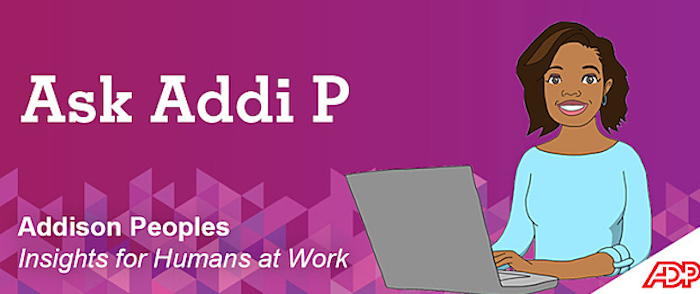Ask Addi P.: How to Improve Engagement and Culture

Dear Addi P.,
My HR department has been making great strides in improving company culture and the level of employee engagement. How can I measure the impact of engagement and culture initiatives to demonstrate their value from a financial standpoint?
-KPI in Kansas City
Dear KPI,
Making the business case for improving company culture is important because senior leadership always wants to know the financial impact of any initiative. There is plenty of research that supports a link between engaged employees and business benefits. Here are some of the latest findings on employee engagement from Gallup, Willis Towers Watson, Deloitte and the ADP Research Institute®.
But if you look carefully, you'll see that even the experts don't always agree on the definition of employee engagement, what should be measured and more importantly, what to do with the data once you have it. Harvard Business Review cautions: "Depending on how it's measured, engagement could represent job satisfaction, emotional investment in the cause, willingness to invest discretionary effort, or advocating for the company as a good place to work. While many studies suggest that increased employee engagement leads to improved business results in aggregate, a deeper look at the data suggests that this may not always be true at an individual level."
So be careful before you jump on board with any particular view of the connection between engagement and the bottom line or how to measure it.
Know Your Organization
Instead, begin where you are with your organization and its mission, goals, strategy and the specifics of what you're trying to accomplish with your work on improving company culture and engagement.
Trying to quantify and measure the ROI of culture or engagement initiatives is always a bit of a chicken-and-egg problem. If you start by figuring out what can be easily measured or designing a strategy with measurement in mind, you're likely to get cleaner, more specific data. Still, this approach can also eliminate a lot of valuable information — everything you are not measuring. A great example is employee engagement surveys. When you use a survey with validated questions that's set up to benchmark responses over time, you'll get great data on the questions you ask. You can know how many employees say they trust the organization's leadership, feel happy (at least sometimes) at work and would refer friends to the organization as employment candidates or customers.
But if you actually ask employees what they want to tell you, you get a bunch of narrative responses that are much more difficult to parse and quantify. Some of it could be valuable, like the need to change lighting or chairs for better comfort and fewer stress complaints or injuries. Some of it may not be, such as gripes about the mess in the break room. The key is to measure what matters to your organization and not get stuck with someone else's definition of employee engagement, standardized questions or goals.
Taking the First Steps
First, figure out what you're trying to accomplish and why, then figure out how to measure it. It sounds like you've already started to work with ideas to change and improve the culture of your organization. Go back to why you started these initiatives and why they are important to the organization? What do you care about? What results are you trying to achieve? When you understand why it matters, you can determine the best way to measure it. Are you looking for employees who love their job, are more productive or both? How do you define "engagement" and "productivity?" What are the rewards and incentives in your organization for the things you value?
Once you're clear on what matters most, look at the research on how those things translate into business value and what can be tracked and measured. Take a look at the links above as well as the latest insights from behavioral economists. I'm also a huge fan of the Applied Guide, a behavioral economics series by Jordan Birnbaum.
Then, understand that the connection between human thought, emotions and actions and business outcomes is not always a direct line.
Take care,
Addi P.
Addi P is a digital character who represents the human expertise of ADP. The questions and challenges come from professionals who manage people at companies of all sizes. The advice comes from ADP experts who have a deep understanding of the issues and a passion for helping leaders create a better workplace. If you have a challenge you'd like to pose for Addi P, complete this simple form
The information provided here is for general informational purposes only and not legal, accounting or tax advice. The information and services ADP provides should not be deemed a substitute for the advice of a professional who can better address your specific concern and situation. Any information provided here is by nature subject to revision and may not be the most current information available on the subject matter discussed.



